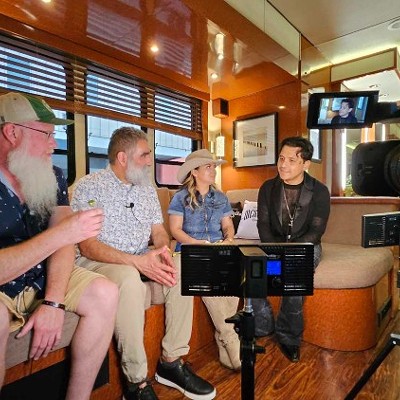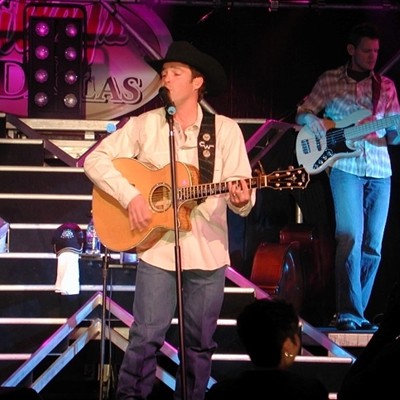Kendrick Lamar amplifies the ongoing discourse between hip-hop and jazz — a profound connection existing as part of a musical continuum.
Over the years, jazz and hip-hop have shared identities as mutating, maligned genres engaged in conversation. Duke Ellington addressed jazz's role in the American consciousness when, as quoted by Nat Hentoff in At the Jazz Band Ball, he said, “By and large, in this country, jazz has always been the kind of man you wouldn't want your daughter to associate with.” John Cassavetes' film Shadows and Shirley Clarke's outré jazz film The Connection captured how jazz became the Beat generation's “meetup” space — not only between the races, but between outsiders and black sheep of society. Black poets of the Beat movement inspired by Jazz, namely Ted Joans and Bob Kaufman, became stylistic forebears of the Jazz-Hip Hop phenomenon. The scholarly Jazz criticism of poet Leroi Jones (aka Amiri Baraka) also laid the blueprint. Perhaps with Ornette Coleman's groundbreaking, forward-thinking Jazz played in The Shape of Jazz to Come people got comfortable with the idea of labeling jazz as an evolving social commentary that offered a reflexive critique of the American zeitgeist.
Thelonious Monk once critiqued the “Where is jazz going?” question: “I don't know where jazz is going," he said. "Maybe it's going to hell. You can't make anything go anywhere. It just happens.” Mos Def (aka Yasiin Bey) offered a similar critique of hip-hop's misguided critics in “Fear Not of Man” when he raps, “Listen, people be askin' me all the time/ Yo Mos, what's gettin ready to happen with hip-hop?/ Where do you think hip-hop is going?/ I tell em, 'You know what's gonna happen with hip-hop?/ Whatever's happening with us.'” Kendrick Lamar's To Pimp a Butterfly, like his earlier Section.80 (which features Gil Scott Heron, Dick Walter and Willie Jones III samples), mutes critics who've questioned the validity of these distinctly American genres by offering an unapologetic Compton-centered documentary style — the latest manifestation of Chuck D's “rap music is like CNN for Black people” idea.
Though To Pimp a Butterfly is viewed by some as an homage to West Coast G-funk (reminiscent of DJ Quik), it's essentially a melding of hip-hop and jazz. Listening to “King Kunta,” “Wesley's Theory” and the Isley Brothers' “That Lady”-inspired anthem “I,” it's clear Lamar appreciates funk music. Most of the album, though, evokes an informal after-hours jazz session in a smoky blue light-illuminated basement. The Jazz-Hip Hop continuum Kendrick Lamar flourishes in also includes Kool G Rap & DJ Polo, Digable Planets, the West Coast's Broun Fellinis, Stetsasonic's “Talkin' All That Jazz,” A Tribe Called Quest and Pete Rock and CL Smooth's “They Reminisce Over You,” which sampled West Coast Jazz saxophonist Tom Scott's rendition of “Today.” Saxophonist Terrace Martin — whose blistering solo in Ab-Soul and Lamar's “Kendrick Lamar's Interlude” (from Ab-soul's These Days... album) is too beautiful for words — acted as bandleader for To Pimp a Butterfly. Martin assembled an ad hoc group including Houston native Robert Glasper, main trumpeter/writer Josef Leimberg, trumpeter Ambrose Akinmusire, saxophonist/arranger Kamasi Washington, bassist Thundercat, drummer Robert “Sput” Searight, percussionist Larrance Dopson and guitarist Marlon Williams, among others (production credits list 71 contributors).
“Alice Coltrane, Sun Ra — I love all the spiritual jazz records,” says Josef Leimberg, whose sonorous yet ominous voice speaks after the breathy intro to the “For Sale? (Interlude)” and right after the Boris Gardiner sample within the context of Thundercat's Bootsy-like bassline in “Wesley's Theory.” As a trumpeter, Leimberg's work appears in six tracks on To Pimp a Butterfly: “For Sale?”, “Wesley's Theory,” “These Walls,” “Complexion (A Zulu Love),” “You Ain't Gotta Lie (Momma Said)” and “Mortal Man.” He counts Freddie Hubbard, Lee Morgan, Miles Davis and Woody Shaw as inspirations, but highlights lesser-known trumpeter Booker Little as his favorite trumpeter.
“To me, Booker Little is one of our greatest stylists — his phrasing, his tone, his style is totally different from other players,” he says, citing Little's work on Eric Dolphy's 1961 At the Five Spot recording. Little passed away at age 23, but his mantra “The more dissonance, the bigger the sound,” along with his preference for emotion over a conventional, diatonic way of playing, lives on. Interestingly enough, Leimberg says he had difficulty hitting a note in the composition for the somber Nelson Mandela, Fela Kuti and Tupac Shakur-inspired “Mortal Man.” “I was telling Kamasi (Washington) I kept missing this note, and he was telling me that's a part of the sound — that's part of the pain,” he says, adding Washington advised him to take it up an octave since the note was intentionally written that way.
Leimberg, whose forthcoming work Astral Progressions follows years of producing, considers working on the Kendrick Lamar project to be a positive experience. “That was super-dope," he says. "I had a good time when I went into the studio with Terrace Martin, Sounwave, and Thundercat,” he says. Having produced records for Myka 9, Freestyle Fellowship, Murs, Snoop Dogg and Saafir, Leimberg adds Lamar could've chosen to focus on hits or a trap album but didn't.
“I applaud and commend him for doing a concept album that addresses these issues,” he says, referencing the heavy topics and timeliness of the album given recent protests concerning police brutality. “They pulled me out of my car, laid me flat on the ground, harassed me for a long time and made me late for my gig,” says Leimberg, recounting an experience he had with police in Los Angeles (which he says is a common experience among musician friends).
On a lighter note, Leimberg (a jazz-fusion aficionado) says he was initially unaware Robert Glasper is from Houston: “I originally thought Robert Glasper was from the East Coast.” And intriguingly, much conjecture surrounding the “Who is LoveDragon?” question seems to point in the direction of D'angelo, Dr. Dre, Anthony “Top Dawg” Tiffith or Kendrick Lamar himself as being the mysterious producer, but anyone placing bets should probably focus on hints dropped by Leimberg. Sounwave and Kendrick Lamar have kept LoveDragon's identity a secret in interviews, but they also tellingly narrowed it down to one unnamed person. As a mystery, it's an interesting piece of the hip-hop/jazz puzzle created by Kendrick Lamar.
Support Us
Houston's independent source of
local news and culture
account
- Welcome,
Insider - Login
- My Account
- My Newsletters
- Contribute
- Contact Us
- Sign out
The Jazzy Undercurrents of Kendrick Lamar's 'To Pimp A Butterfly'
Ericka Schiche May 28, 2015 5:00AM
[
{
"name": "Related Stories / Support Us Combo",
"component": "11591218",
"insertPoint": "4",
"requiredCountToDisplay": "4"
},{
"name": "Air - Billboard - Inline Content",
"component": "11591214",
"insertPoint": "2/3",
"requiredCountToDisplay": "7"
},{
"name": "R1 - Beta - Mobile Only",
"component": "12287027",
"insertPoint": "8",
"requiredCountToDisplay": "8"
},{
"name": "Air - MediumRectangle - Inline Content - Mobile Display Size 2",
"component": "11591215",
"insertPoint": "12",
"requiredCountToDisplay": "12"
},{
"name": "Air - MediumRectangle - Inline Content - Mobile Display Size 2",
"component": "11591215",
"insertPoint": "4th",
"startingPoint": "16",
"requiredCountToDisplay": "12"
}
,{
"name": "RevContent - In Article",
"component": "12527128",
"insertPoint": "3/5",
"requiredCountToDisplay": "5"
}
]
KEEP THE HOUSTON PRESS FREE...
Since we started the Houston Press, it has been defined as the free, independent voice of Houston, and we'd like to keep it that way. With local media under siege, it's more important than ever for us to rally support behind funding our local journalism. You can help by participating in our "I Support" program, allowing us to keep offering readers access to our incisive coverage of local news, food and culture with no paywalls.
Ericka Schiche
Trending Music
- Tour Bus Talk with Christian Nodal
- Country Kicks Off Houston Summer Concert Season in a Big Way
- Blackberry Smoke Ignites Some Sizzling Southern Rock
-
Sponsored Content From: [%sponsoredBy%]
[%title%]

Don't Miss Out
SIGN UP for the latest
Music
news, free stuff and more!
Become a member to support the independent voice of Houston
and help keep the future of the Houston Press FREE
Use of this website constitutes acceptance of our
terms of use,
our cookies policy, and our
privacy policy
The Houston Press may earn a portion of sales from products & services purchased through links on our site from our
affiliate partners.
©2024
Houston Press, LP. All rights reserved.




